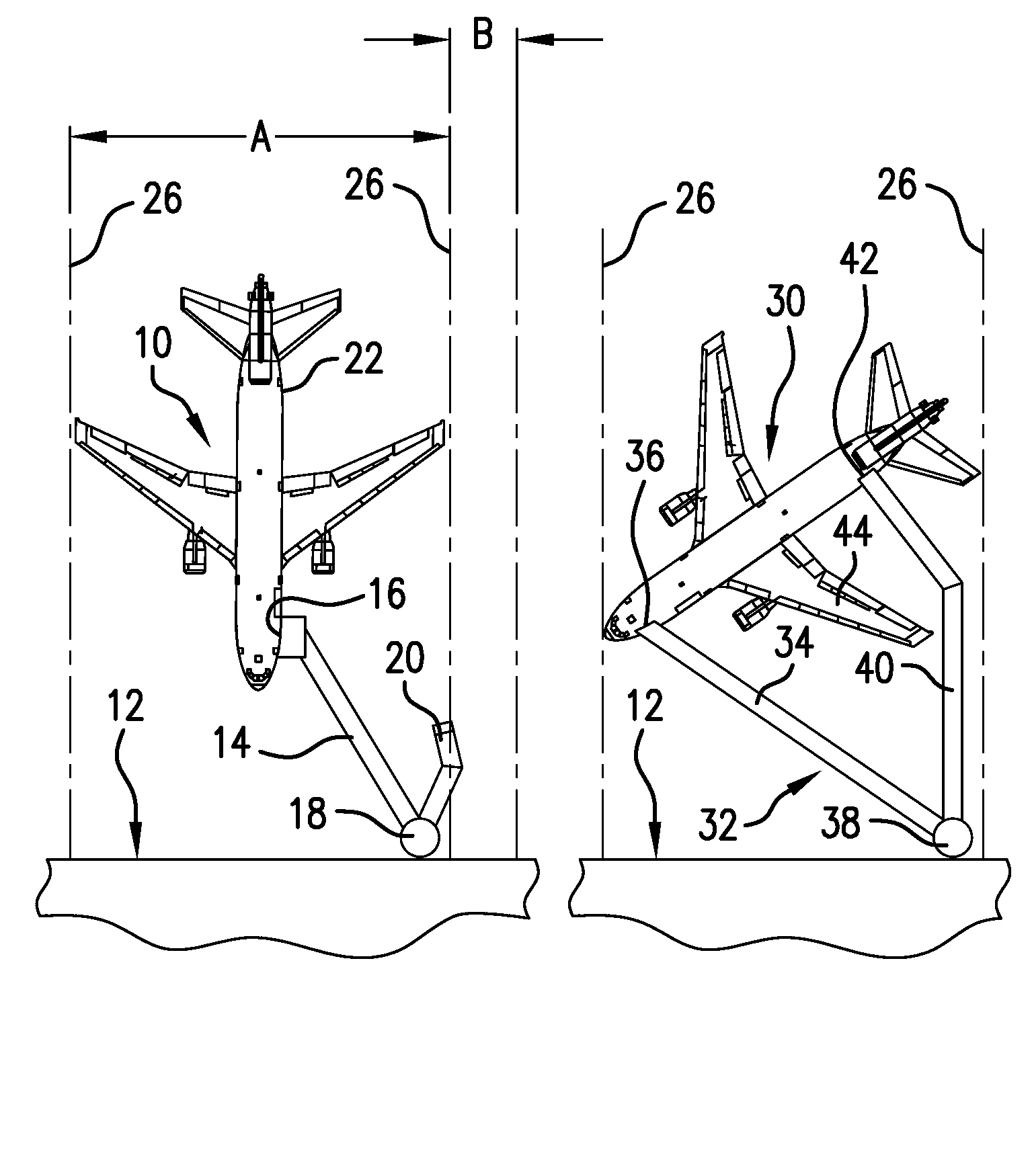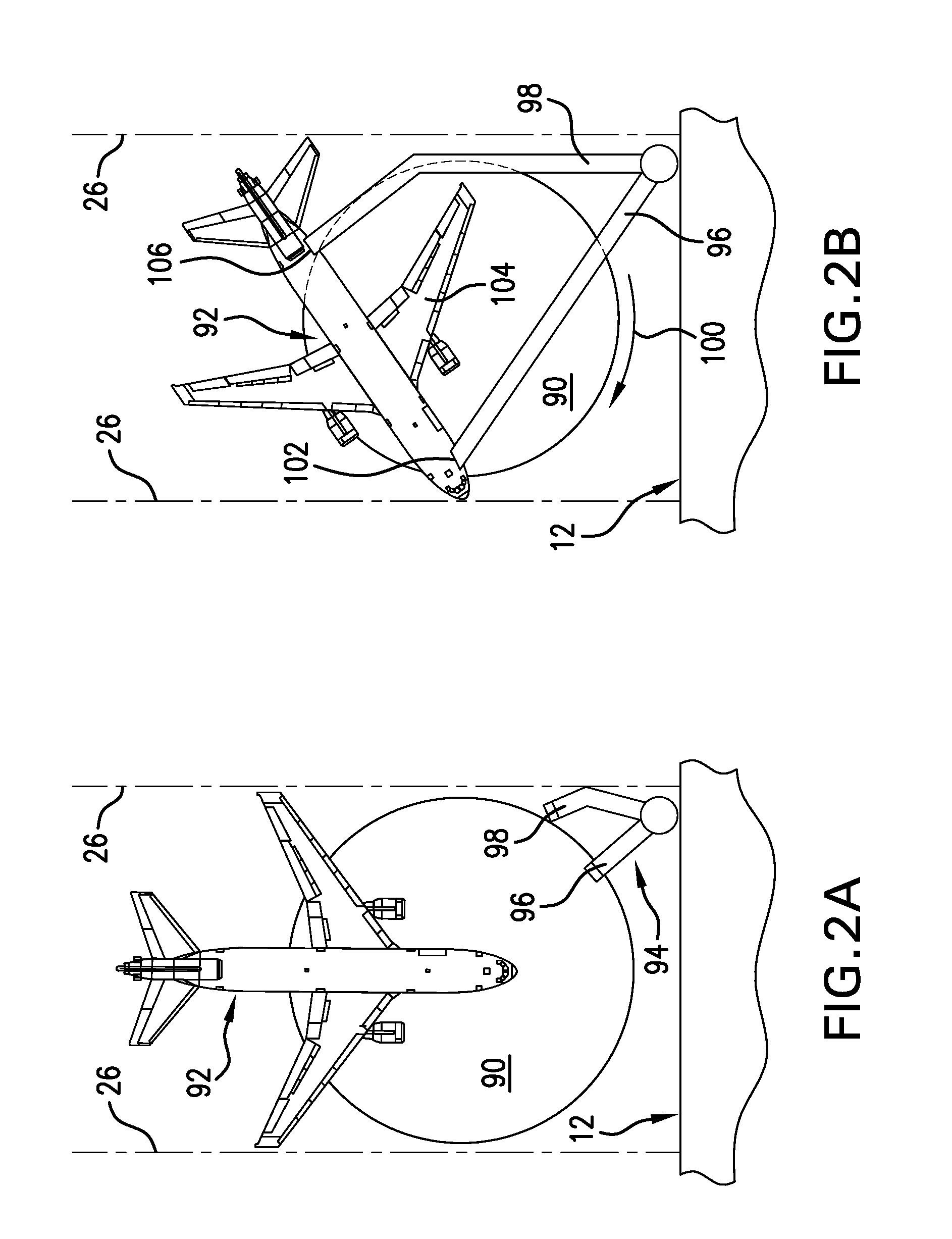Aircraft Gate Parking and Servicing Method
a technology for airport gates and aprons, applied in the direction of bridges, alighting gear, construction, etc., can solve the problems of affecting the daily schedule of airlines, not only delaying passengers, but also not earning revenue from the transportation of passengers or crew, etc., to achieve the effect of saving time and avoiding delays
- Summary
- Abstract
- Description
- Claims
- Application Information
AI Technical Summary
Benefits of technology
Problems solved by technology
Method used
Image
Examples
Embodiment Construction
[0029]As noted above, minimizing the time an aircraft must spend parked at a gate to unload and load passengers and baggage and to be serviced maximizes the time and aircraft can be in flight, which, in turn, leads to reduced aircraft operating costs and increased airline savings. Every minute that can be saved affects this balance. Consequently, airlines continually review actions that may be taken and procedures that may be implemented to minimize, within established safety parameters, an aircraft's turnaround time. Since modifications to existing airport terminal gates and the construction of new terminal facilities are usually very costly and time consuming, airlines and airport operators prefer more economically feasible options. Methods for improving the efficiency of and reducing the time for aircraft gate operations that may be implemented within existing gate space are more desirable because of their likely lower cost than those that require additional infrastructure. Until...
PUM
 Login to View More
Login to View More Abstract
Description
Claims
Application Information
 Login to View More
Login to View More - R&D
- Intellectual Property
- Life Sciences
- Materials
- Tech Scout
- Unparalleled Data Quality
- Higher Quality Content
- 60% Fewer Hallucinations
Browse by: Latest US Patents, China's latest patents, Technical Efficacy Thesaurus, Application Domain, Technology Topic, Popular Technical Reports.
© 2025 PatSnap. All rights reserved.Legal|Privacy policy|Modern Slavery Act Transparency Statement|Sitemap|About US| Contact US: help@patsnap.com



